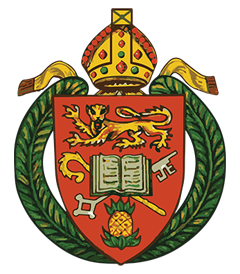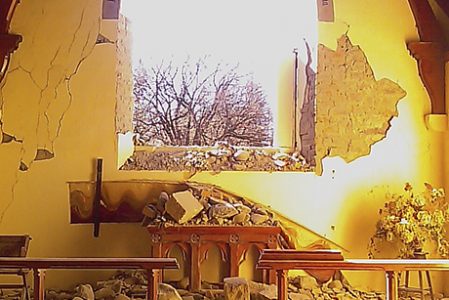More than half of the finalists in an award recognising “commitment, investment or a unique solution to earthquake strengthening which has saved or will now protect a heritage building” in Christchurch, New Zealand, are Anglican churches and a school. The six buildings have recently re-opened following extensive renovation and repair work after the devastating 2011 earthquake in the city. They are amongst 290 Anglican properties in the Diocese of Christchurch under the care of the Church Property Trustees. Some 234 of them sustained damage as a result of the quake, the most notable being Christ Church Cathedral.
Holy Innocents, Mt Peel was re-opened in September last year, seven years after the earthquake partially destroyed the gable on the buildings east-end. A building technique used by the Etruscans in Italy, five centuries before the birth of Jesus Christ, was used to precision-fill newly drilled holes in the stonework with a mixed grout of silicate and lime to strengthen the building so it will withstand another large earthquake.
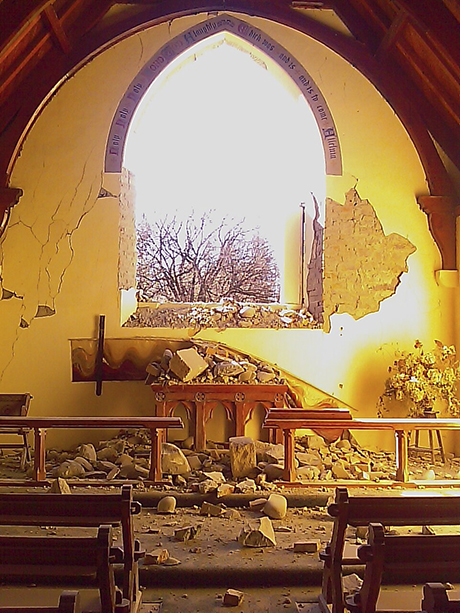
The damage to the east-end gable of the Church of the Holy Innocents in Mt Peel is plain to see in this photo (above); but there is no trace of the tremor in this post-renovation photo (below).
Photos: Anglican Life
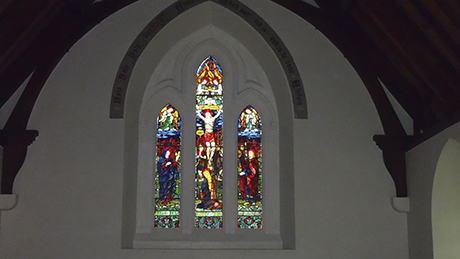
St Bartholomew’s Church, Kaiapoi opened in 1855 but within four years the entire building was moved from a sandhill to a more solid base. During the earthquake reconstruction, the entire building was again moved so that contractors could lay new quake-proof foundations before it was rolled back into position. “More than any other church I can name, it’s a church on the move,” Bishop Victoria Matthews said when she re-opened the building in July last year.
St Paul’s Church, Tai Tapu is a category one heritage-listed building, designed by Cecil Wood and built in the 1930s by Sir Robert Heaton Rhodes in memory of his wife who died in 1929.
St Barnabas Church, Fendalton, was closed for six years while workers repaired its basalt stonework and mortar. Repairs were also carried out to sections of the roof and tower which moved separately from the rest of the building in the tremor.
St Cuthbert’s Church in Governor’s Bay is described as one of the country’s most iconic stone churches. It was built by the first settlers in 1860 and many well known people are buried in its churchyard. The church re-opened in June last year.
St Michael’s Old Stone Building is today part of the oldest school in New Zealand’s Canterbury region. Work was completed last March to repair stonework and rebuild newly strengthened gable ends.
Other buildings nominated in this category are the Statue of Captain Robert Falcon Scott (Christchurch City Council); Dean’s Farm Buildings at Christchurch Boys’ High School (The Building Intelligence Group); Christ’s College – kitchen and tower (Wilkie + Bruce Architects); the Former St Luke’s Vicarage (Maiden Group); and Mona Vale Homestead (Christchurch City Council).
Judges whittled down some 70 entries for the biennial Canterbury Heritage Awards into 36 finalists across seven categories. The winners will be announced on 15 June during a ceremony at the Isaac Theatre Royal, itself a winner of the last awards in 2016.
Repairs to Christ Church Cathedral were held up after unsuccessful legal challenges to the Church Property Trustee’s plans to demolish the ruins and replace it with a modern designed building. Last year the Diocesan Synod agreed to the more expensive option of re-instating the Cathedral, after local and central government teamed up with heritage campaigners to pledge funding towards the costs. Work is yet to begin as the legal and formal structures are put in place to give effect to the agreements.
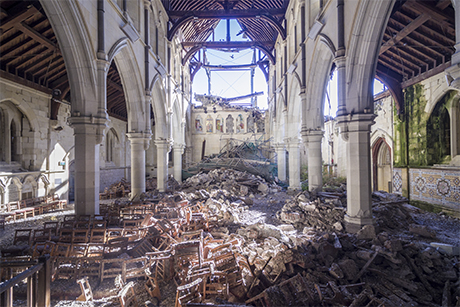
The nave of Christ Church Cathedral after the 2011 earthquake.
Photo: Anglican Life
